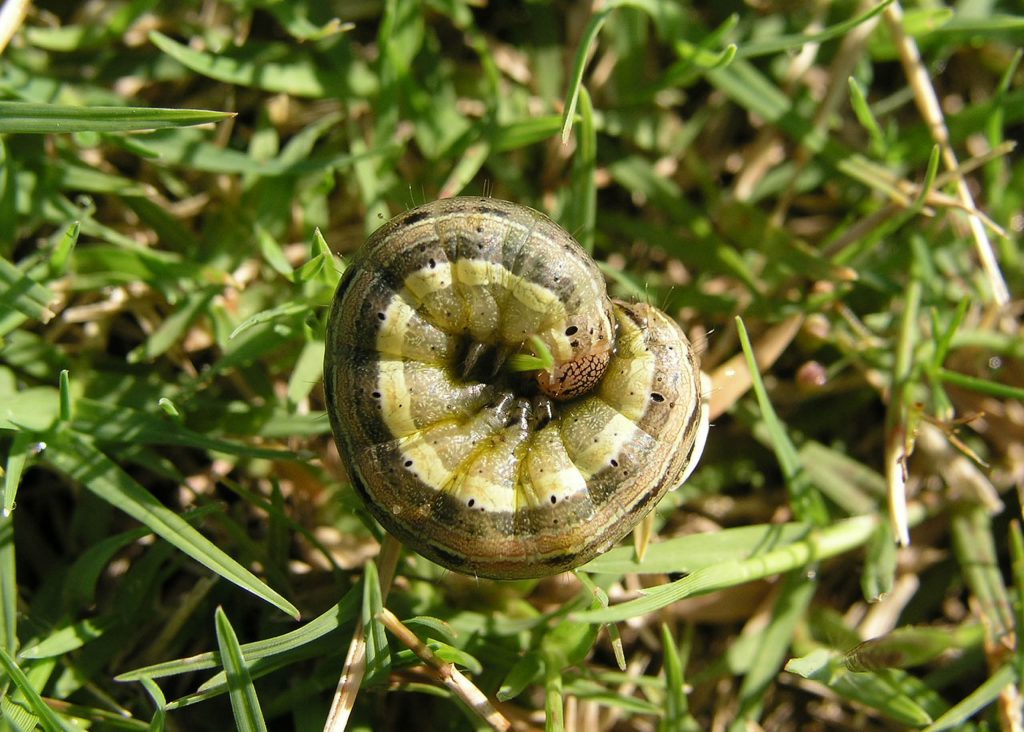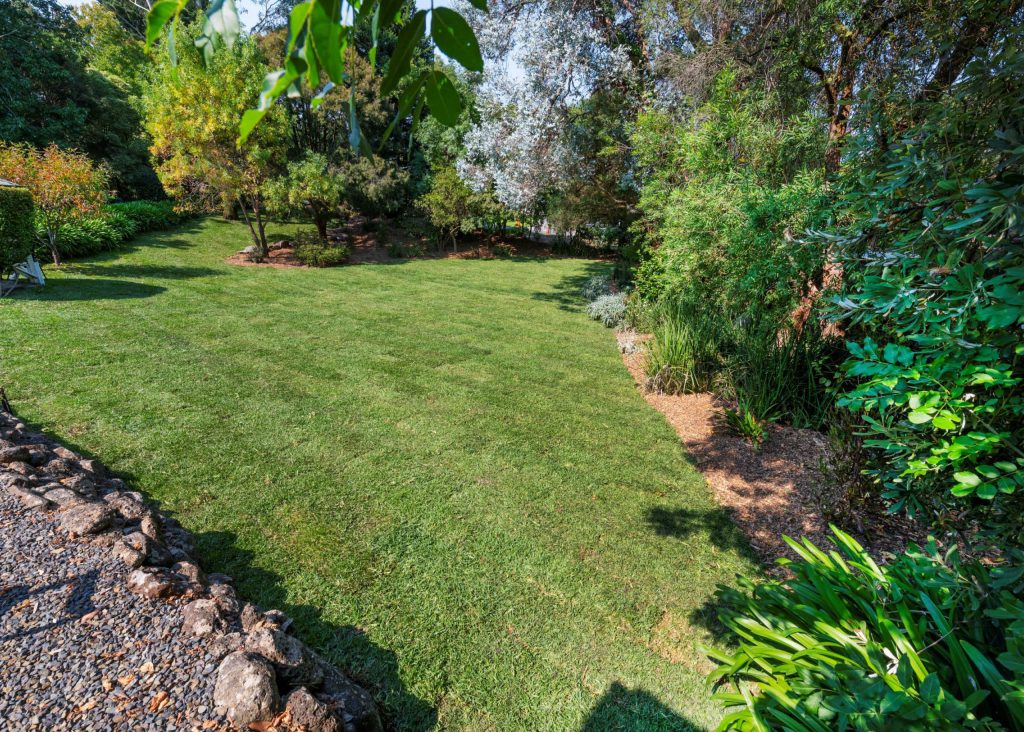Couch Grass- Your Guide
Couch grass, sometimes referred to in other markets as ‘Bermuda Grass’ and less frequently by its scientific name Cynodon dactylon, has been a staple of the Australian lawn ...

 Originating in Europe, Tall Fescue Grass is a densely growing cool-season grass featuring coarse, bunching blades that are 5-8mm wide. It has a deep green colour, which is retained all year round (if irrigated), and a deep root structure, which allows it to withstand moisture stress and poor soils. It grows particularly well in cooler climate zones with high rainfall, but can be prone to pests and disease.
Originating in Europe, Tall Fescue Grass is a densely growing cool-season grass featuring coarse, bunching blades that are 5-8mm wide. It has a deep green colour, which is retained all year round (if irrigated), and a deep root structure, which allows it to withstand moisture stress and poor soils. It grows particularly well in cooler climate zones with high rainfall, but can be prone to pests and disease.
So is Tall Fescue the right choice for you? In this article, we’ll look at why Tall Fescue may not be the ideal selection for Australian backyards.
 Tall Fescue is well known in commercial agricultural applications, regularly used as a fodder crop for feeding livestock. However, new varieties have emerged that are suited for domestic landscaping, and Tall Fescue is now recognised as a hard wearing turfgrass species that adapts to a wide range of soil conditions.
Tall Fescue is well known in commercial agricultural applications, regularly used as a fodder crop for feeding livestock. However, new varieties have emerged that are suited for domestic landscaping, and Tall Fescue is now recognised as a hard wearing turfgrass species that adapts to a wide range of soil conditions.
Tall Fescue grows best at a soil pH of 5.5-6.5. Being a cool-season grass, Tall Fescue is shade tolerant, but will also tolerate full sun. It has good drought resistance but grows best with a regular annual regimen of mowing, watering and fertilisation.
Tall Fescue is best suited to parts of Australia where the climate is cooler and rainfall is higher.
While Tall Fescue is a popular cool season variety in Europe, maintaining a good-looking Tall Fescue lawn can be a challenge in Australia for a number of reasons.
Tall Fescue does not tolerate warm, humid climates particularly well, leaving it open to the development of destructive lawn diseases. This makes Tall Fescue a risky choice for Australia’s more northern states.
 Being a cool season grass, Tall Fescue is susceptible to Brown Patch, a fungal disease caused by Rhizoctonia. It causes brown irregular circular patches in your lawn that can vary from a few centimetres in size to several metres in diameter if left untreated. Brown patch thrives in hot and humid weather, but can also be exacerbated by excessive nitrogen, moisture, poor soil damage, too much thatch, and compacted soil. Infections can happen quickly when nights are warm, calm and humid.
Being a cool season grass, Tall Fescue is susceptible to Brown Patch, a fungal disease caused by Rhizoctonia. It causes brown irregular circular patches in your lawn that can vary from a few centimetres in size to several metres in diameter if left untreated. Brown patch thrives in hot and humid weather, but can also be exacerbated by excessive nitrogen, moisture, poor soil damage, too much thatch, and compacted soil. Infections can happen quickly when nights are warm, calm and humid.
 Leaf Spot is a foliar disease caused by a group of fungal pathogens that are particularly active in moist conditions. Symptoms start out as small purplish lesions on the grass leaves, creating irregular white or black patches on the lawn, and resulting in dieback.
Leaf Spot is a foliar disease caused by a group of fungal pathogens that are particularly active in moist conditions. Symptoms start out as small purplish lesions on the grass leaves, creating irregular white or black patches on the lawn, and resulting in dieback.
Crown Rust is another fungal disease known to affect Tall Fescue. It presents as bright orange powdery spots (also known as pustules) on the leaves, eventually forming small and black pustules. Crown Rust spores are particularly active in highly humid conditions, and are generally spread by wind and rain. Rust diseases can also make your lawn even more susceptible to other pests and disease.
Tall Fescue is also susceptible to damping-off, which causes seedlings to die off soon after germination. This means that Tall Fescue lawns that are established from seed are at risk if sown in excessively moist conditions.
Tall Fescue lawns can be prone to pest infestations that can hinder their growth, and cause your lawn to turn brown. Tall fescue is particularly vulnerable to Army Worms, Cutworms and White Grubs.
 Army Worms are the larvae of the Army Worm moth (Spodoptera mauritia). They are particularly problematic in tropical, subtropical, and warmer coastal areas of Australia. Army Worms are active at night, stripping grass leaves and leaving patches of light-brown, straw-like grass where they’ve been.
Army Worms are the larvae of the Army Worm moth (Spodoptera mauritia). They are particularly problematic in tropical, subtropical, and warmer coastal areas of Australia. Army Worms are active at night, stripping grass leaves and leaving patches of light-brown, straw-like grass where they’ve been.
Cutworms are the destructive offspring of the Bogong Moth, Pink Cutworm Moth, and Black Cutworm Moth. The larvae feed at night, cutting seedlings at ground level before feeding on the fallen foliage.
White Curl Grubs are the larvae of scarab beetles. They kill grasses by attacking the roots, causing patches of grass to die back.
If your lawn has developed brown patches, or if you see large numbers of birds feeding on the lawn, you could have a pest problem and should investigate further.
Tall Fescue grasses are recognisable by their broad clumping leaves, which means if you’re looking for a soft, manicured aesthetic in your backyard, you may be disappointed. Tall Fescue is known for being tolerant to high traffic (after all, it is used on sporting pitches and racecourses), but it won’t give you the lovely soft, luxurious lawn feel that many homeowners have come to love.
Tall Fescue can also become thin after a dry hot summer and may take some time to recover.
An endophyte is a fungus that lives naturally in a plant, and some grasses and endophytes have a unique symbiotic relationship. The grass provides the fungus with nutrition, a home and a way of spreading, while the endophyte offers the plant some protection from pests and disease by producing alkaloid chemicals that give it resistance.
Due to its susceptibility to pests and disease, some Tall Fescue grasses have been bred with an endophyte to give them better resistance to these stressors.
While endophytes can be enormously beneficial to the plant, they can be toxic to animals – in agricultural settings, livestock health can be negatively impacted by ingesting the alkaloids produced by the endophyte, and care should be taken if you have animals.
If you’re located in a cool climate area with high rainfall, Buffalo grass varieties are a terrific alternative to Tall Fescue for your home lawn – especially if you’re looking for a good looking lawn with versatility and climate adaptability.
 This Soft Leaf Buffalo is known for its consistent deep green colour, hard wearing, good recovery and drought tolerance. It also has up to 70% shade tolerance with low wear and up to 50% shade tolerance with moderate to high wear.
This Soft Leaf Buffalo is known for its consistent deep green colour, hard wearing, good recovery and drought tolerance. It also has up to 70% shade tolerance with low wear and up to 50% shade tolerance with moderate to high wear.
Where it grows: Prestige Soft Leaf Buffalo is well-suited for most parts of Australia including much of Queensland, New South Wales, ACT, Victoria, South Australia and Western Australia.
Expect to pay: Between $13 and $20 per square metre.
 This Soft Leaf Buffalo was rated as number one Buffalo for shade tolerance in independent Horticulture Innovation and Department of Primary Industry trials. Sapphire Buffalo also recovers well from wear, is a low thatch type and has good winter colour. The folding of its leaf creates extra softness and aids to protect it from cold and frosty conditions.
This Soft Leaf Buffalo was rated as number one Buffalo for shade tolerance in independent Horticulture Innovation and Department of Primary Industry trials. Sapphire Buffalo also recovers well from wear, is a low thatch type and has good winter colour. The folding of its leaf creates extra softness and aids to protect it from cold and frosty conditions.
Where it grows: Sapphire Soft Leaf Buffalo is well-suited for most parts of Australia including much of Queensland, New South Wales, ACT, Victoria, South Australia and Western Australia.
Expect to pay: Between $12 and $20 per square metre.
 Palmetto is the biggest selling Buffalo in the World. It offers low maintenance, less watering and is a great hard-wearing option for families with kids and pets. Palmetto’s dense growth means it is harder for weeds to invade the lawn.
Palmetto is the biggest selling Buffalo in the World. It offers low maintenance, less watering and is a great hard-wearing option for families with kids and pets. Palmetto’s dense growth means it is harder for weeds to invade the lawn.
Where it grows: Palmetto Soft Leaf Buffalo is well-suited for most parts of Australia including much of Queensland, New South Wales, ACT, Victoria, South Australia and Western Australia.
Expect to pay: Between $12 and $20 per square metre.
Tall Fescue is a cool-season grass that is well suited to the cooler, southern states of Australia. While it has good shade and drought tolerance, Tall Fescue has some significant drawbacks, including its susceptibility to pests and disease and a coarse clumping habit which is not ideal for backyards. For a more versatile grass variety, with great colour, resistance to pests and disease, and suitability for most Australian climates, you should consider Buffalo grass as an alternative.
For expert advice on the right grass selection for your home, speak to your local myhomeTURF turf farmer or supplier. Use Find a Turf Supplier to locate a supplier in your area.